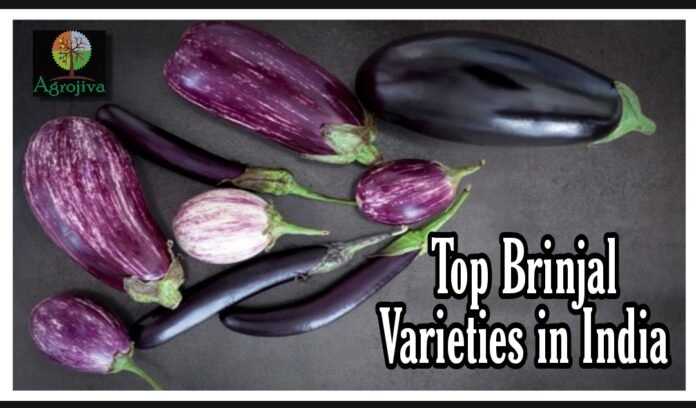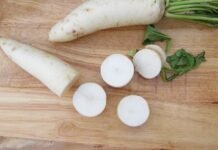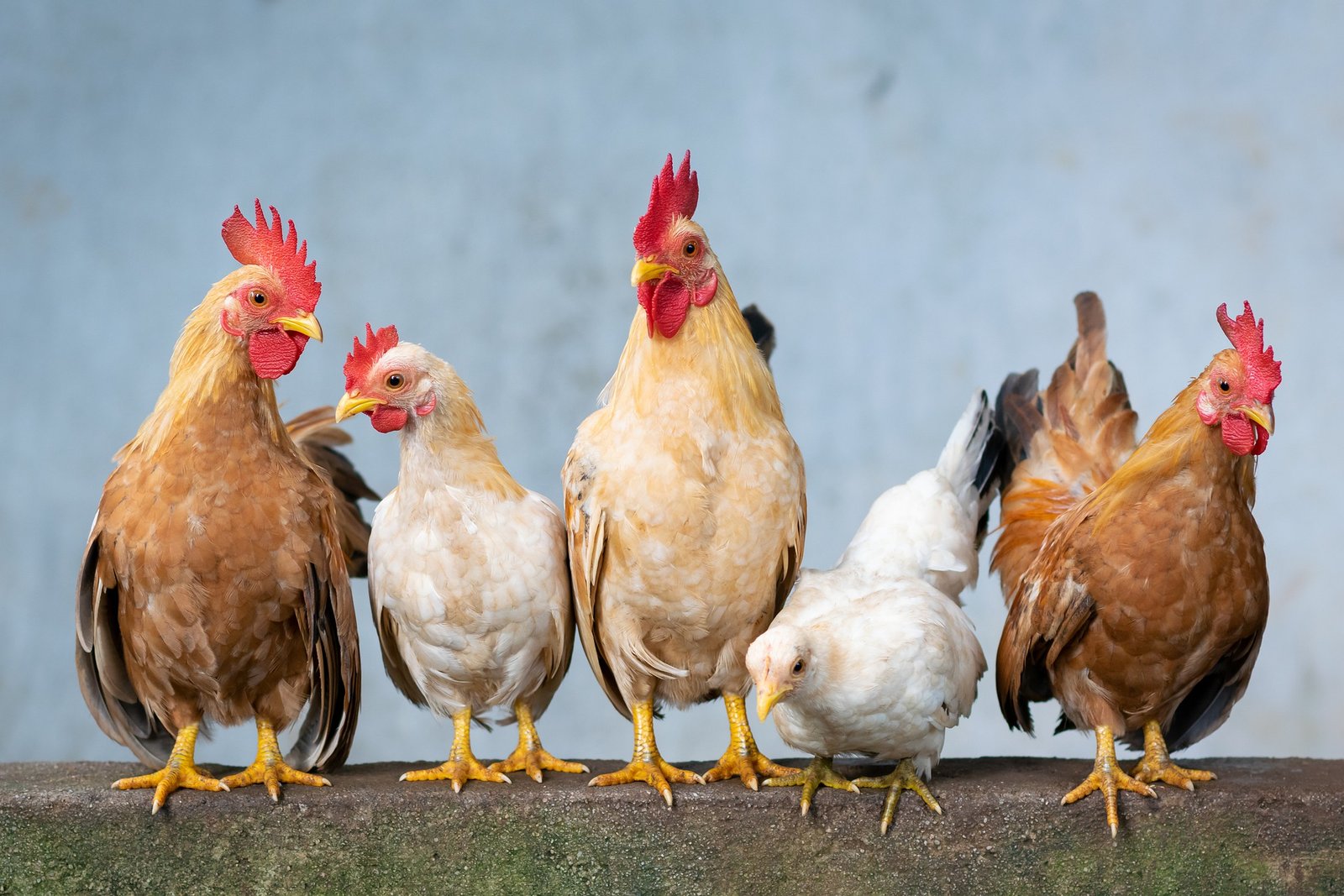Long Varieties of Brinjal
Pusa Purple Cluster. A medium-early variety, developed at IARI, New Delhi. Fruits are long 10-12 cm, deep purple in colour and borne in clusters of 4-9 suitable for southern and northern hills. Moderately resistant to bacterial wilt.
PH 4. Developed by PAU. Ludhiana and HAU, Hisar collectively. A derivative of Hyderpur x PPL. Fruits are medium to long and thin, dark purple in colour, flesh light green colour.
Pusa Kranti. A variety developed at IARI, New Delhi. It combines good qualities of three parents namely PPL, Hyderpur and Wynad Giant. Fruits 15-20 cm long, oblong, dark purple and less seeded. The average yield recorded was 277 g/ha. Suitable for growing both in the spring and autumn seasons.
Pant Samrat. A selection from local collection at Pantnagar. Fruits of attractive texture. Resistant to Phomopsis blight and bacterial wilt. Less infested by shoot and fruit borers and jassids. Good for the rainy season.
Kt-4. This variety is from IARI Regional Research Station, Katrain. It has medium sized plants. Fruits are borne in clusters of 3 to 5, cylindrical, tender or firm of purple colour. Resistant to wilt. Average yield is 370 g/ha.
ARU-2C. This variety was bred at Almora. Fruits are cylindrical, long, bright violet in colour and borne in clusters of 4 to 6. It is field resistant to bacterial wilt. Average yield is 320 q/ha.
K 202-9. A variety form Kalyanpur identified in 1987. Fruits are bright purple in colour. It has the ability to withstand frost. Tolerant to fruit rot. Average yield is 380 / ha.
Read More:- Eggplant cultivation,Brinjal improved varieties, and commercial importance Click Here
Pusa Anupam. Developed at IARI Regional Research Station, Katrain by crossing Pusa Kranti x PPC and released in 1991. Fruits borne in clusters of 3-5. Fruits 14-18 cm long.cylindrical, soft and purple. Resistant to bacterial wilt and yields 300-340 q/ha.
Hisar Pragati. Early variety developed at HAU, Hisar. Fruits are 15-20 cm long, shining and dark purple. It yields 325 g/ha.
Hisar Jamuni. Developed at HAU, Hisar through hybridization between Auro x R-34 in 1993. Fruits 10-15 cm long. dark purple to black with green calyx and fruit stalk. It is suitable for both kharif and rabi season cultivation. Average yield is 320 g/ha.
Arka Nidhi. Fruits are long (20-25 cm), thin and bright purple in colour. They are borne in clusters. It yields 300-350 q/ha.
Punjab Barsati. This variety has been developed from the cross PPC x H-4. It take about 65 days from transplanting to the first harvesting. Its plants are dwarf, erect and thornless. The fruits are medium-long and shining purple. It is more tolerant to fruit borer.
Punjab Sadabahar Baingan. This variety has been developed from Japanese Long x R-34. It takes about 76 days from transplanting to the first harvesting. Plants are dwarf, erect and thornless. The fruits are thin, long and deep purple. Its average yield is 350 q/ha. It is comparatively tolerant to fruit borer and cultivated throughout the year
Azad B-3. Developed at Vegetable Research Station Kalyanpur, Kanpur (Uttar Pradesh) High yielding, long fruited, producing bright glossy, purple fruits having attractive shape and size. They are medium thick, long, shining purple, smooth, stigmatic end blunt and calyx shining green
Arka Sheel. It is selection from the material collected from Coorg (Karnataka). Fruits medium sized, long, soft and attractive purple. It contain more flesh and less seeds. Crop takes 110 days for first picking after transplanting. Average yield is 390 q/ha.
Arka Shirish. Fruits are soft, thick, very long, attractive and light green in colour. Flesh is nutritive. It yields 380 q/ha.
Other Long Varieties of Brinjal are Pusa purple long, Pusa Hybrid-5.
Round Varieties
Punjab Bahar. It is a thornless variety developed mainly for cultivation in the spring season. Fruit dark purple with shining surface and contains less seeds.
Punjab Moti. It has been developed from a cross SM 17-4 x PBR 91-2. Fruits small, round, shining and deep purple. Suitable for sowing in autumn and spring seasons.
S-1. Developed at PAU, Ludhiana. Fruits medium sized, round, attractive and purple. It is resistant to bacterial wilt.
Barahmasi. It provides fruits for long duration. Fruits long (9-10 cm), flesh soft with less seeds and yields 250-300 q/ha.
Hisar Shyamal. Developed at HAU, Hisar and recommended for II, IV, V and VI zones. Fruits round, dark purple and soft with thick skin. Stem and leaves are also purple in colour. It provides first picking about 70 days after transplanting. Average yield is 250 q/ha. Tolerant to bacterial wilt and little leaf.
BR-112. An early variety developed at HAU, Hisar. Fruits round, fleshy and light purple. Average yield is 250 q/ha.
PLR-1. Developed by TNAU, Coimbatore. Released in 1996 for the cultivation in IV, VI and VII zones. Fruits small, round, shining and attractive with purple colour. Each cluster bear 1-2 fruits. It yields 250-300 q/ha.
Jamuni Gola. Developed by PAU, Ludhiana. Fruits are plumpy and shining purple in colour. Early maturing. First harvesting in 65 days after transplanting.
Pusa Upkar. Plants are semi-vigorous with moderate branching, free of spines. Mature Sterm and leaves are green but younger branches show light pigmentation under low temperature.Flowers appear solitary initially but in cluster later on with bluish violet corolla. Fruits pendent solitary, round, medium sized, glossy, dark purple and single fruit weighs 200 g and average yield is 400 q/ha.
DBSR-31. Developed at IARI, New Delhi. Fruits round, purple, attractive, 9.5 cm long and 7.6 cm in diameter. It yields 350-400 q/ha.
DBSR-44. Developed at IARI, New Delhi. Fruits purple and borne in clusters of 4-6. Average yield is 250-300 g/ha.
DBR-8. A variety from Akola (Maharashtra). Fruits 11.2 cm long, 5.5 cm in diameter and purple. Average yield is 350-400 q/ha.
Aruna. Developed at Akola(Maharashtra) Fruits are round but very small in size and shining purple. Yield is 250-300 g/ha.
Pant BR 129-5. Developed at Pantnagar. Fruits home in clusters. Resistant to bacterial wilt.
Pant Baingan 91-1. Also developed at Pantnagar. Fruits are medium sized, round and purple Plants spread parallel to ground. Resistant to wilt.
Pusa Ankur. Developed at IARI, New Delhi. Plants are erect and non-spiny. An early. high yielding variety with oval-round, small sized (60-80 g), dark purple and attractive fruits. It takes 45 days for first picking after transplanting. Average yield is 340 g/ha.
Pusa Purple Round. It was developed at IARI, New Delhi. Each fruit weighs 137 g.
Other Round Varieties of Brinjal are Pusa purple round, Pant Rituraj, Pusa Hybrid-6, Arka Kusumakar.
Oval/Oblong Varieties
Arka Navneet (F1). Fruits oval-round and free from bitterness. Fruit skin attractive, deep purple, flesh soft and white with few seeds. Yield is 650-700 g/ha.
Pusa Anmol (F1). It has attractive dark purple and oblong fruits. It produces early and increased yield of about 80% over PPI.
Pusa Bindu. Plants are pigmented all over, upright with moderate branching habit, free of spines. Fruits pendent, small, oval-round, glossy, violet purple with pigmented peduncle. Bearing habit is solitary to partial clusters. The average yield is 300 g/ha.
Dudhia. Fruits are milky white, shining, and oval . Most suitable for winter season cultivation. Specially suitable for the preparation of Bhurta.
BH-1 (F1). Plants are medium in height, compact and thornless with green foliage. Fruits are oblong, plumpy and shining purple. It is early in fruiting and first harvesting is after 52 days of transplanting. Tolerant to fruit borer. It can be planted in February and August.
Punjab Neelam. It is a selection from an inter-varietal cross between S-16 and PBR-19-2 made at PAU, Ludhiana. Plants medium in height, erect in habit and thornless. Fruits are medium sized, oval-round, and dark purple in colour. It matures in 65 days after transplanting. Suitable for transplanting in February and August.
Other oval Varieties of Brinjal are Pusa Uttam.















